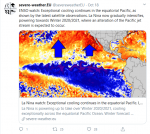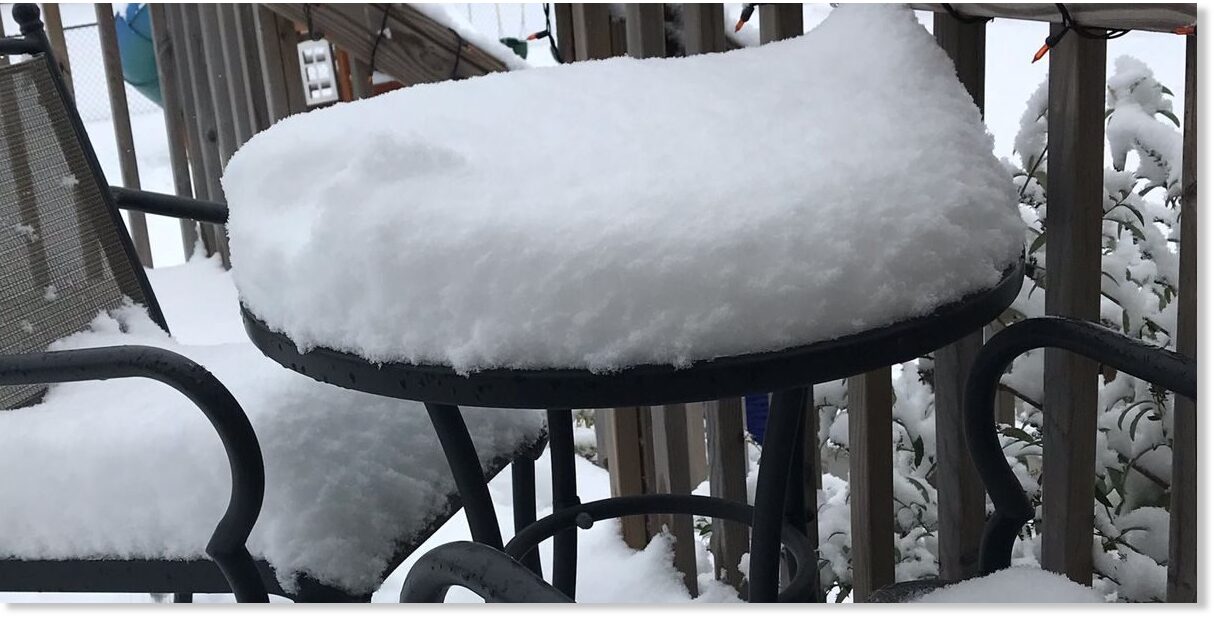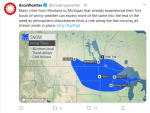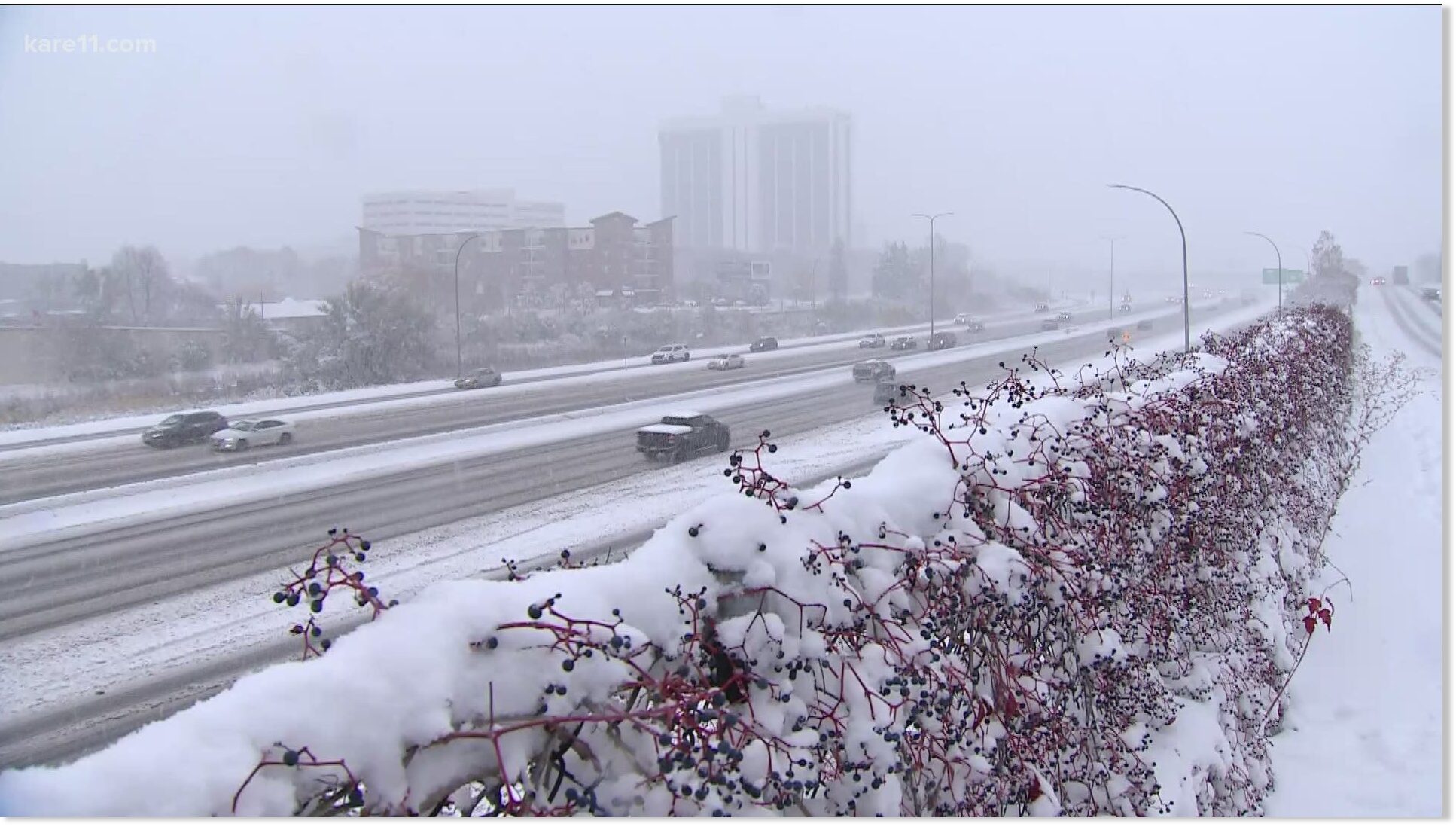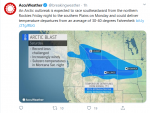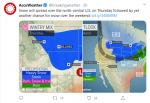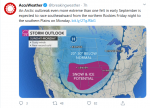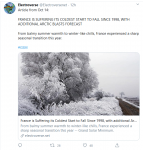During the 2017-18 and 2018-19 seasons, while the engine debris was lost, the Greenland Ice Sheet gained 686 billion tonnes.

electroverse.net
LOST 2017 AIRBUS ENGINE FOUND UNDER 12-FEET! OF GREENLAND ICE
OCTOBER 15, 2020 CAP ALLON
Four hours into a September 2017 Air France flight from Paris to Los Angeles, one of the aircraft’s four engines spontaneously exploded.
“Is there a problem?” read the message from air traffic controllers to the pilots. The question was initially met by confusion, but after a photo taken on a passenger’s phone (shown below) was hurried to the cockpit by a flight attendants, an problem was indeed discovered.

Missing front portion of the Airbus A380.
The front portion of an engine had fallen off, and had plummeted more than 11 kilometres to the frozen Greenland ice sheet below.
The plane, an Airbus A380, made an emergency landing in Canada two hours later, and thankfully no one was injured. But regulators warned the incident could have played out much differently if debris from the explosion had hit the aircraft instead of plunging to the ground.
THE SEARCH
The ordeal set French authorities on a mission to find the lost engine pieces and pinpoint the root cause of the problem, requiring investigators to survey miles of terrain made perilous by crevasses in Greenland’s ice sheet, brutal snowstorms, limited daylight hours, and the constant threat of polar bear attacks. Within just days of the incident, helicopters were dispatched and investigators were scouring the pure white landscape for signs of the engine.
After a week and three unsuccessful search flights, the terrain was already buried under a fresh layers of snow. With months of harsh winter weather ahead, investigators decided to resume their search the following spring.
Spring, 2018 soon rolled around and an additional team of investigators had joined the effort on foot, wielding ground penetrating radar–a device that looks like a lawnmower and is commonly used by archaeologists searching for buried artifacts.
However, their extensive efforts over the spring and summer failed –in part because the radars weren’t searching deep enough below the icy surface: the ice had grown too thick and was masking the debris– and with another brutal winter looming, the search was once again put on pause.
That winter it discovered that one of the investigators had developed a four-wheeled robot called FrostyBoy (shown below) used to map crevasses.
The robot, designed by a Mr Lines, was tapped by the BEA to help the recovery effort, and ended up being the lynchpin for the entire project.

“Frostyboy” robot designed by Mr Lines to map crevasses.
While searching for cracks, the rover’s sensors picked up an abnormal reading, revealing the robot had –by pure happenstance– rolled over the engine fan’s exact resting place.
“We’re ridiculously lucky that it happened the way it happened,” Mr Lines said of FrostyBoy’s chance detection. It gave his robot, a project he worked on while pursing his PhD at Dartmouth, a small but bizarre claim to fame.
However, the job was far from done.
THE DIG
In June, 2019, Mr Lines and a team of Icelandic mountain guides flew by helicopter to the excavation site in SW Greenland.
It was quickly discovered that retrieving the front section of the engine presented its own set of problems.
In less than two years, the fan hub fragment had been buried by a staggering
12-feet (almost 4-meters) of compacted snow. During the 2017-18 and 2018-19 seasons, the Greenland Ice Sheet gained
686 billion tonnes of snow and ice (
DMI), which added to the whopping
544 billion tonnes gained in 2016-17 (the fifth highest in record books dating back to 1981), and was then followed up by the
349bn tonnes added last year.
[Note, these totals don’t account for the annual losses due to the breaking off, or “calving”, of icebergs from the ice sheet’s edge. However, it must be stressed that calving events usually occur when an ice sheet is EXPANDING, not shrinking; and furthermore, icebergs breaking off a glacier aren’t necessarily “lost” to the ocean, they continue existing, like some island extension of the sheet].
For more:
The trend is changing: climate is cyclic, after all -- never linear: Grand Solar Minimum + Magnetic Pole Shift.

electroverse.net
Mr Line and his dig team constructed a small dome-shaped tent to shelter than from the severe winds during their three-day-long excavation effort.
At night, they slept with rifles next to their sleeping bags as a precaution for polar bear attacks. The population of the Arctic bears, it turns out, is actually on the rise: “The number of polar bears has quintupled in the past 50 years from about 5,000 to about 25,000 today,” writes
Dr. Jay Lehr. Zoologist Dr. Susan Crockford goes even further, writing in 2019 that approximately 39,000 polar bears exist in the wild today.
The first few metres of snow and ice above the engine fan shovelled out easily, but Mr Lines used a chain saw to hack apart the thick, compacted layers of frost further down.
The crew carved a ramp into the excavation site so that a sleigh operated by a pulley system could be used to shuttle about
20 metric tons of snow out of the pit.
“We had a lot of sunshine because the sun doesn’t really set [at that time of year],” Mr Lines said; “So we just worked through the night, and then went to bed for a few hours and then woke up and just started digging again.”
Finally, on day three, the tips of the engine’s fan blades came into view.

An industrial heater was used to melt ice away from the fan before the makeshift pulley system hauled it out to surface level. And in footage of the excavation (shown below), Mr Lines and the rest of the crew whoop and applaud as a helicopter airlifts the giant fan fragment, which was still largely intact, out of the ice.
View: https://youtu.be/zPcSU0A1G9w
The dig team celebrating their efforts
(as well as Greenland’s staggering amount of ice growth?–perhaps not…).
The battered piece of debris later proved vital in understanding what actually went wrong on the 2017 Air France flight.
Investigators determined that it wasn’t a maintenance issue, as previously thought, and that the engine failed because of a phenomenon called “cold dwell fatigue,” which caused the metal in the engine’s fan to fail far sooner than anticipated — a material which is extremely common across the aerospace industry, and highlights an area for improvement which could prevent incidents such as this happening again in the future.
Perhaps even more crucially though, the search and dig also revealed that ice and snow are building at tremendous levels on the Greenland Ice Sheet, with recent years, as discussed above, looking to have reversed the
naturally occurring trend of loss.
The
COLD TIMES are returning, the mid-latitudes are
REFREEZING, in line with
historically low solar activity,
cloud-nucleating Cosmic Rays, and a
meridional jet stream flow.
Both NOAA and NASA appear to agree,
if you read between the lines, with NOAA saying we’re entering a
‘full-blown’ Grand Solar Minimum in the late-2020s, and NASA seeing this upcoming solar cycle
(25) as “
the weakest of the past 200 years”, with the agency correlating previous solar shutdowns to prolonged periods of global cooling
here.
Also, we can’t ignore the slew of new scientific papers stating the immense impact
The Beaufort Gyre could have on the Gulf Stream, and therefore the climate overall.

 Prepare accordingly
Prepare accordingly—
learn the facts, relocate if need be, and grow your own.




























